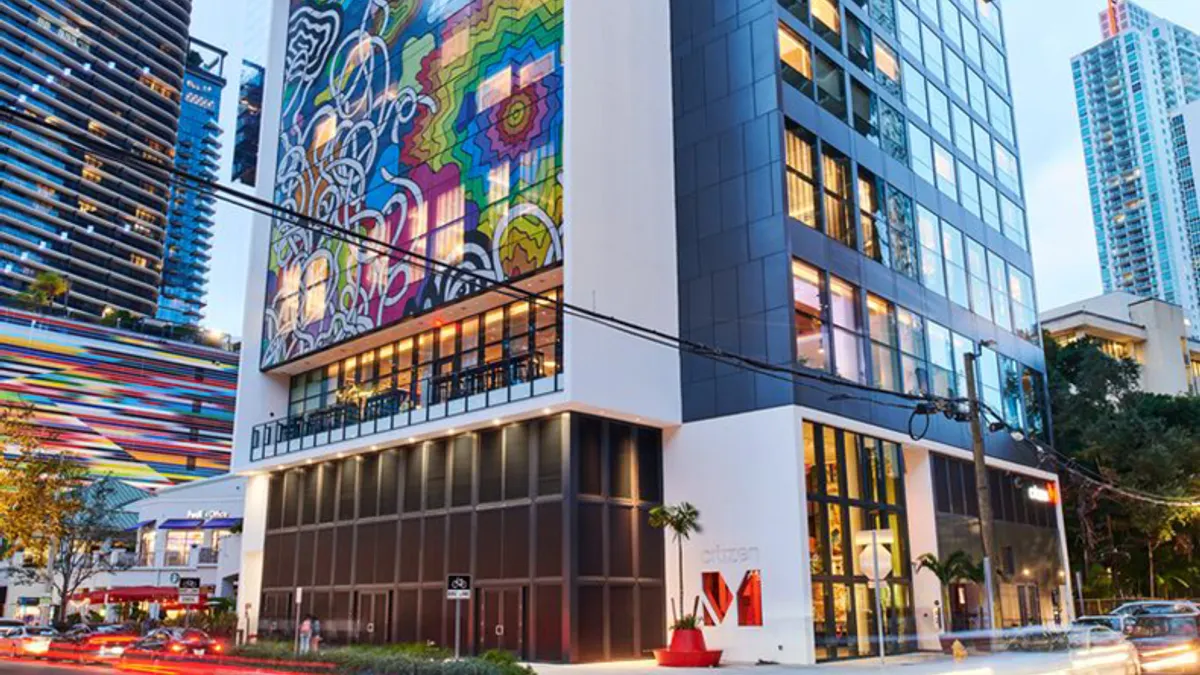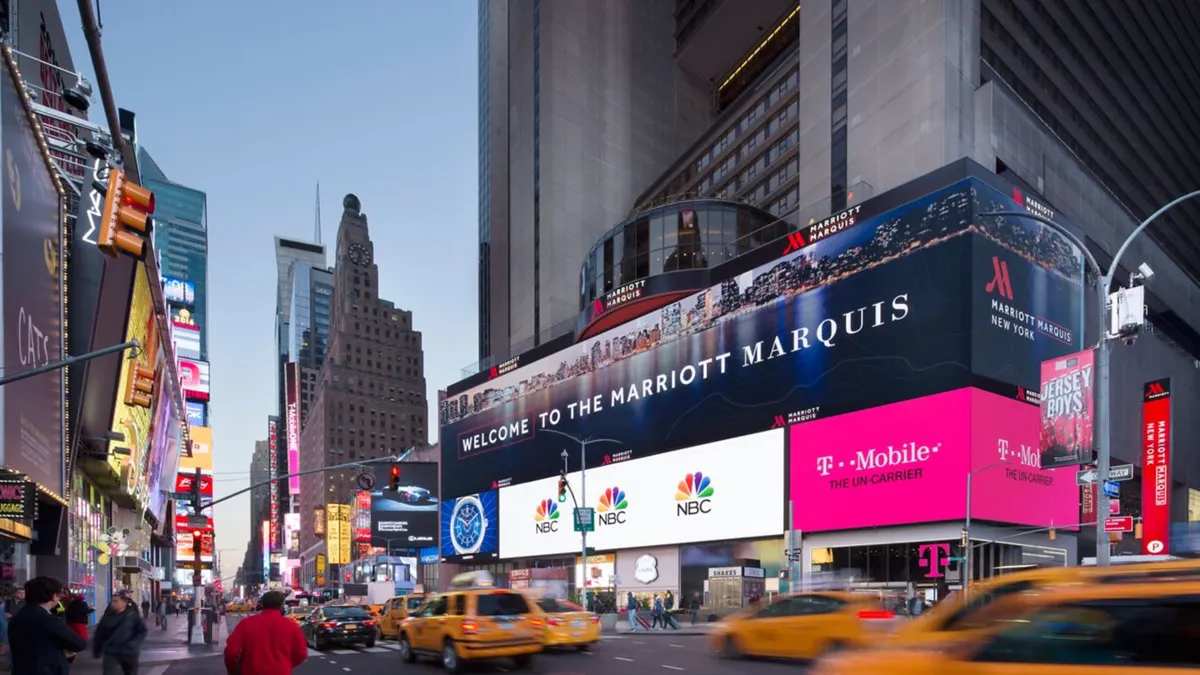Brand proliferation, rising labor costs and economic uncertainty are top of mind for hospitality industry leaders as 2025 winds down.
During The Lodging Conference last week in Phoenix, chief executive officers from Highgate, Peachtree Group, Sonesta Hotels and more discussed these topics, giving insights into how union worker demands, brand expansion, tariffs and travel trends will impact U.S. hotels in the near term. Below are some of the top takeaways from CEOs who spoke at the event.
“If you're planning travel to New York around June of 2026, I would make sure you find accommodations, because there are going to be [hotel worker] strikes everywhere in New York.”

Arash Azarbarzin
Principal and CEO at Highgate
More on hotel labor:
During a Tuesday panel, Highgate CEO Arash Azarbarzin said “the biggest elephant in the room” was the organized hotel labor movement happening across cities including Los Angeles, New York, San Francisco and Boston.
Over the last several years, thousands of union hotel workers have gone on strike in some of those cities, demanding higher wages. The widespread labor disputes are part of a “master planned” movement by hotel workers to push for higher wages nationwide, Azarbarzin said.
“The real threat is [union workers] are organizing from city to city more than we’re organizing from company to company,” Azarbarzin said, noting the hotel industry needs to come together to combat the movement. If Los Angeles hotel workers advocate getting paid a certain wage, he explained, then Boston workers will fight for more pay as well, using Los Angeles as an example.
In July, Los Angeles passed a $30 minimum wage. Hotel industry associations, including the American Hotel & Lodging Association and the Asian American Hotel Owners Association, have denounced the ordinance, despite local union workers insistent that a higher wage is needed to keep up with the rising cost of living in the city.
“The big kahuna is going to be New York,” Azarbarzin said, alluding to the New York Hotel and Gaming Trades Council’s union contract with the Hotel Association of New York City, which is set to expire in July 2026.
In New York, mayoral candidate Zohran Mamdani — who is endorsed by the New York Hotel and Gaming Trades Council — is running on a promise to raise the city’s wage floor to $30 per hour by 2030.
“95% of us cannot tell you the difference between all these brands. … It's starting to get to a point where we have way too many brands.”

Greg Friedman
Managing Principal and CEO at Peachtree Group
More on brand proliferation:
Peachtree Group CEO Greg Friedman said during the Tuesday panel that “there’s a lot of confusion” among hotel investors, developers, owners and guests over the proliferation of hotel brands on the market.
Preferred Travel Group President Michelle Woodley shared a similar sentiment during the discussion.
“There are so many brands in the marketplace [that] I don’t think that our average consumer knows what any of them are,” she said. “It’s led to confusion. There’s no differentiation among them. And I think [the industry] has done a big disservice to the consumer with all the brands.”
Last week alone, Hilton, Wyndham Hotels & Resorts, Marriott International and Sonesta Hotels launched new brands.
Liam Brown, Marriott’s group president for the U.S. and Canada, defended his company’s brand count during the Tuesday panel. He said that if there wasn’t demand by developers for an array of different brands, Marriott wouldn’t be operating so many.
Friedman added that “brands do a really good job in certain areas,” such as helping to drive reservations and providing “predictability at the performance level.”
“We had record-breaking occupancy in August of over 80% — we haven’t seen that since 2014 — and our RevPAR broke 200 [Canadian dollars]. So, great to see, and this was all across the country. Were there any areas that were soft? Not really.”

Beth McMahon
President and CEO at Hotel Association of Canada
More on hotel performance:
During a Wednesday panel, Hotel Association of Canada CEO Beth McMahon gave an update on hotel performance in Canada, where tourism boomed over the summer. According to CoStar data, hotel occupancy in Canada in August stood at 80.7%, while ADR rose 6.1% year over year to CA$250.18 (or about $178), and RevPAR increased 7.7% year over year to CA$202.01.
That performance was starkly different from what played out in the U.S., where hotels saw RevPAR decline 1% year over year in August to $105.06.
Late-summer revenue dips came after hotel CEOs reported widespread U.S. RevPAR declines in the second quarter, citing decreased government and international travel amid economic uncertainty. Las Vegas resorts, specifically, saw a drop in Canadian visitors.
In light of the U.S. downturn, Choice Hotels International Chief Development Officer David Pepper said Canada poses a big opportunity for portfolio expansion.
“If anybody knows what’s going on at the border, Canadians are staying in Canada, and we are seeing double-digit RevPAR increases in all the provinces in Canada,” Pepper said during a Monday panel. “There’s a big opportunity for us for growth in those Canadian markets because they are totally under supplied.”
“Costs have gone up on certain types of goods astronomically.”

John Murray
President and CEO at Sonesta Hotels
More on tariffs:
During the Wednesday panel, Sonesta Hotels CEO John Murray noted that tariffs have exacerbated an already-high-cost environment for hotels. He joined a list of executives who spoke about tariffs throughout the week. At the panel, industry leaders shared that trade policy changes have impacted the cost of building materials, furniture, and food and beverage products.
Increased costs are not the only issue tariffs pose, Marriott CFO Leeny Oberg said Wednesday. She noted that flippant decision-making surrounding tariffs has caused widespread uncertainty.
“You’ve got all these people trying to make plans about their properties, and it’s literally every week or every day there’s a new announcement [on tariffs]. ‘Oh, it’s furniture today,’ or, ‘Oh, it’s this country today.’ From a planning perspective, it makes it extremely difficult,” Oberg said.
Stan Kozlowski, principal at CooperWynn Capital, expressed a similar sentiment during a separate Wednesday discussion, which focused on the extended stay segment. When trade policy “changes with a Twitter post in the morning,” it’s hard to look at a 12- to 18-month schedule and have confidence in it right now, he said.

















